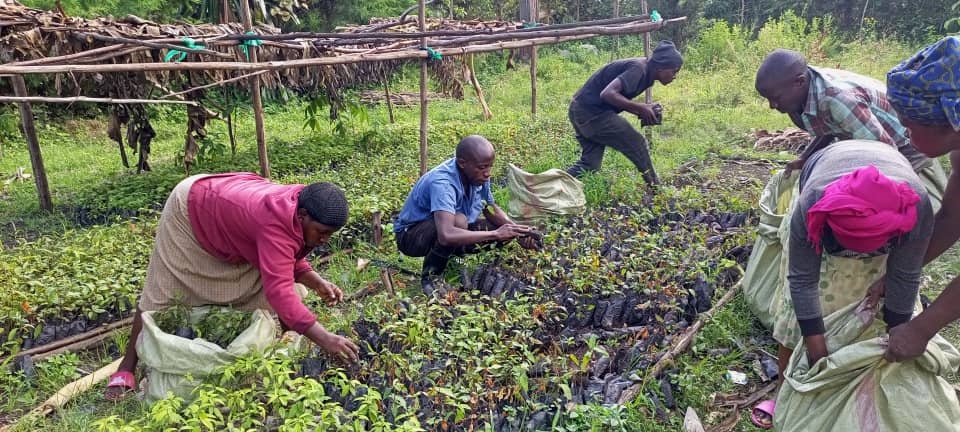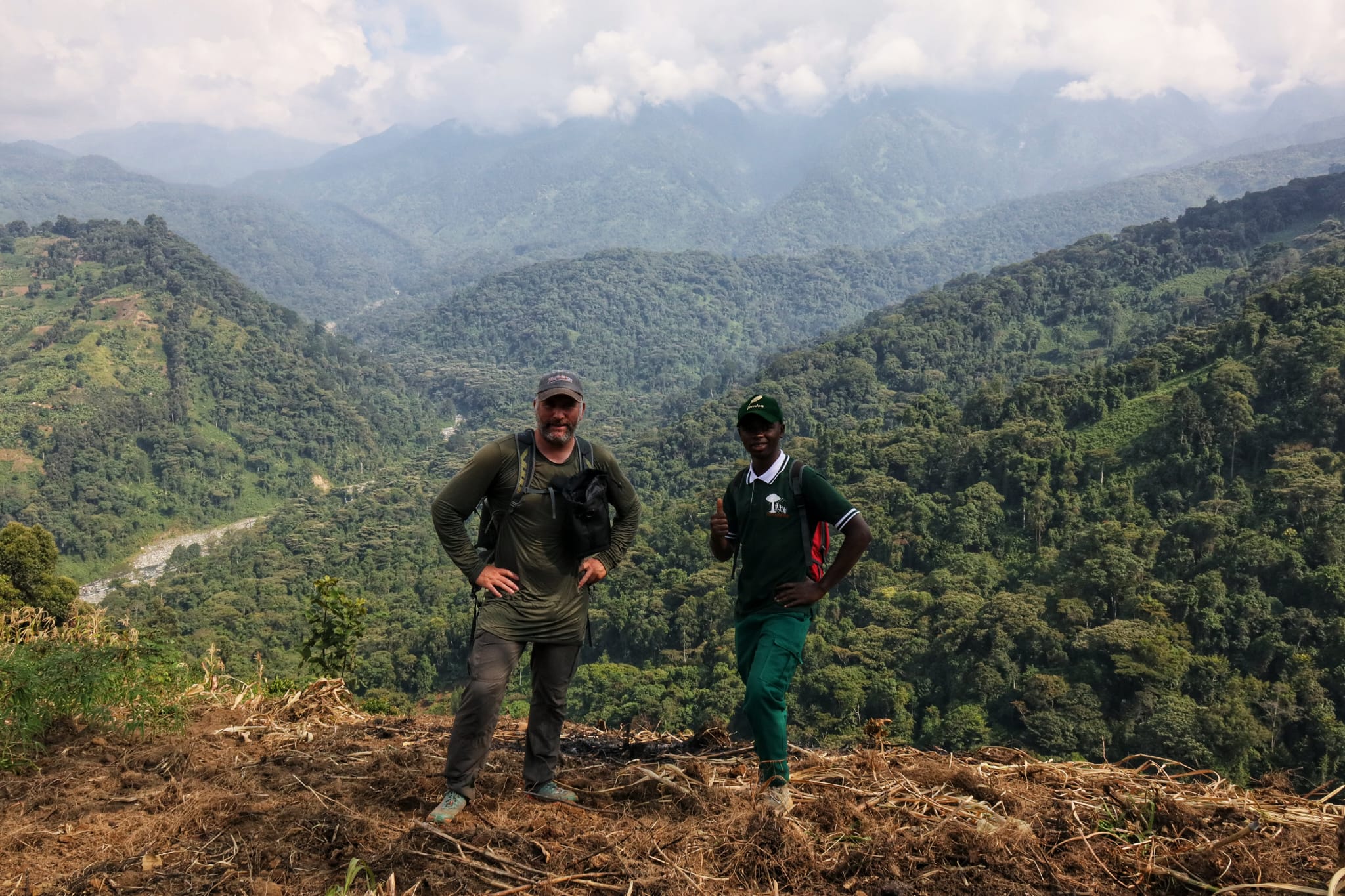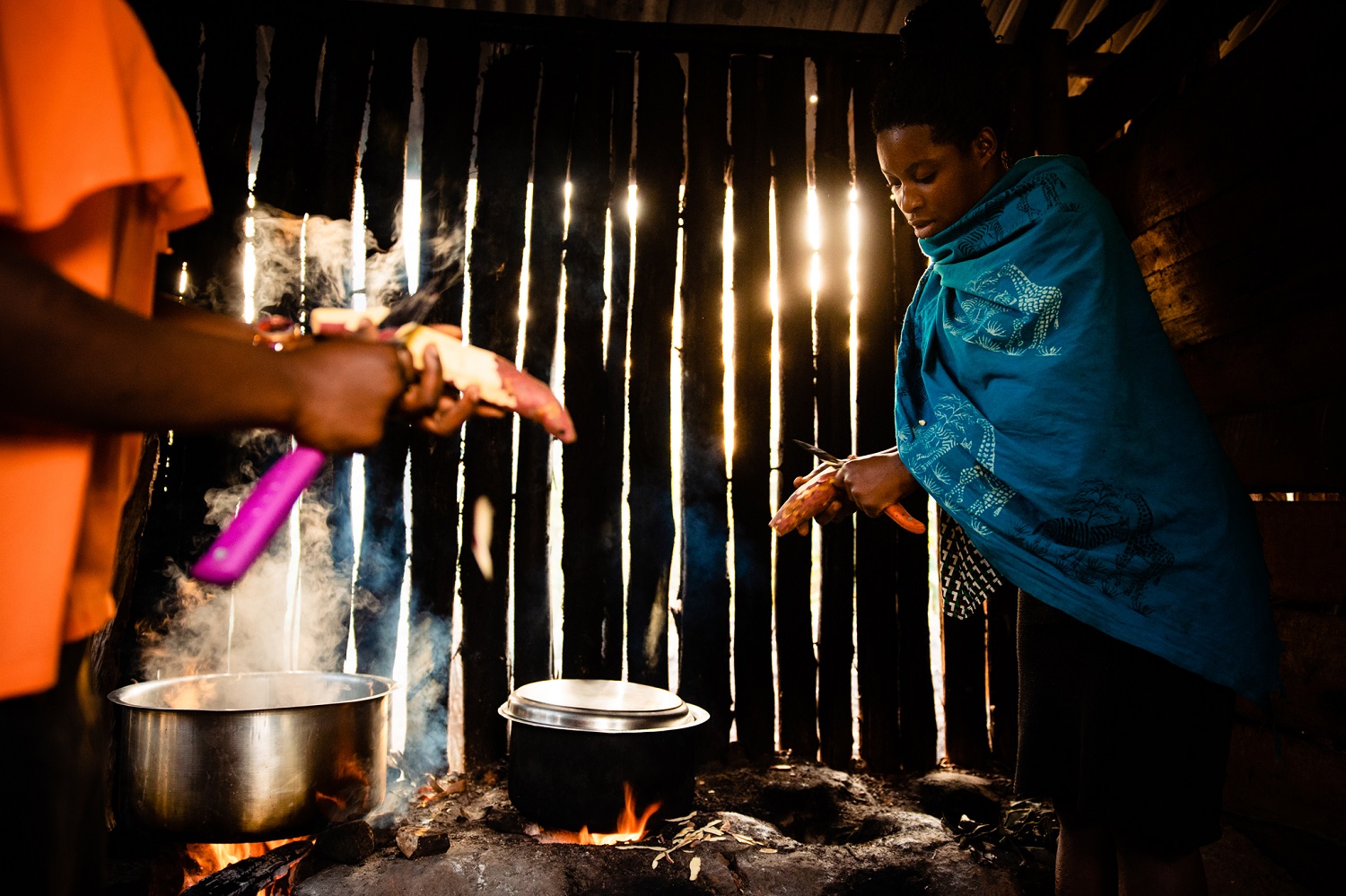The last time we held a tree-planting event was in October 1919. By then, it was a culture to collectively plant some trees as a community every year. This initiative enabled the Ruboni community to reforest tens of acres in the Buraru forest landscape and other communities outside of Rwenzori Mountains National park.
In 2020, when covid19 set in, it shuttered our annual tree-planting dream. Like everything was closed for two years, convergence as a community was also banned. It was through collective community work that we used to plant trees. There was no way; we would plant trees without creating a crowd. 2020 was a candle of hope blown off for our conservation project through tree planting.
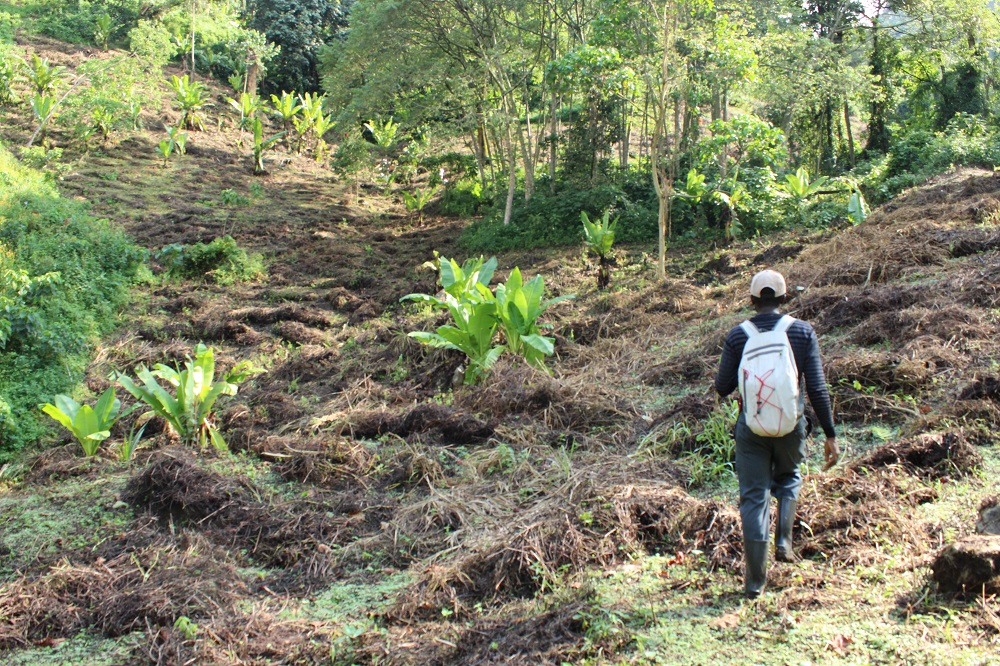
Along with closing crowds, our tourism business, the largest contributor to tree planting, was also closed for almost two years. This further disturbed us when we realized that we can’t even raise one coin to facilitate the tree-planting activity. When tourism started to open up in 2021, our hope woke up, that maybe one day; we shall have the joy of raising some money, getting partners and planting trees again.
In 2022, our dream got closer. We kept promising ourselves and the other community members that we will plant trees. This was even before we had the money and partners. Luckily, in the course of the year, we received some partnership opportunities. Along with that, we had started receiving guests and our debts were getting manageable, meaning our dream was getting closer. July and August 2022 were the wake-up months for our tree-planting dream. We got two partners willing to join hands on tree planting. these two important meetings were held at the Ruboni community camp. This meant that the time had come and we were set to resume our annual tree-planting event.
7th October 2022 has been the first time to plant trees collectively again, since the emergence of covid19. It was a landmark day and a rare opportunity for the community to get together for the environment. This was the rebirth of the tree-planting events. It is a day worth celebrating and remembering in our story of tree planting and forest conservation. Indeed, this event opened a series of tree planting days that will take place through the month of November 2022 while we still receive the rains. We intend to plant up to 15000 trees in the Ruboni community forest by the end of the month.
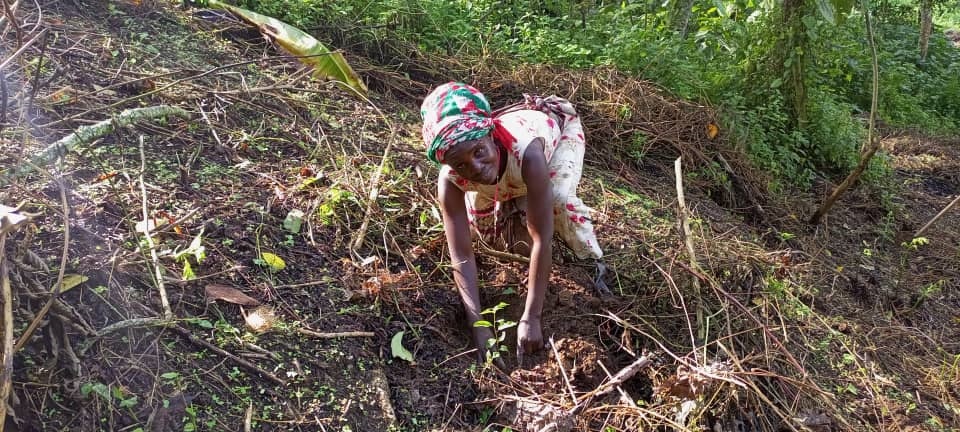
This is how the tree planting day went;
We took mobilization through public places such as churches, trading centres and interpersonal word-of-mouth communication. A simple poster was developed and distributed in these channels. The poster was also shared on Facebook and several WhatsApp groups. In the end, 50 people attended the event. Of the 50, 19 were women, 31 were men and 39 were youth. In total 3800 trees were planted in a vanity of four indigenous species
Logistics:
The logistics were simply getting the team of locals to do the voluntary roles. We provided facilitation for some activities, but 90% of the organization work was done freely by the local youth tourist guides. We partnered with the community visitor centre to hold the seedlings, host us and prepare the meals.
During the tree planting event, we offered meals and refreshments. In reality, a special meal was offered to welcome the local community members from the long day of planting
Most of the trail is not motorable. The seedlings were carried on the back. Using gunny bags and traditional straw baskets, the men and women carried the seedlings to the planting site, on a rugged journey. From the community visitor centre where the trees were stored, the 3km trail was all walked. It crosses river Mubuku and other small streams over the hills.
The rain at lunchtime:
Shortly after we finished planting and set foot at the community visitor centre, our converging point, then the rain started. It was a heavy downpour with the wind. It was as if to separate the planters from none planters. The planters were squeezed into one hut like the 12 disciples on Pentecost day. All people were locked in one hut under the dark atmosphere and the wind pressure. Our trees have gotten watered, was a statement made by everyone in the hut. Yes, the trees were just getting introduced to the new life that we had given them in the forest.
Lunch was served and it turned out to be the biggest lunch for all the planters. Most people eat but wished they had come with their families. After the meal, we listened to three speeches; from the coordinator of the project, the chairperson board of directors of Ruboni Community Conservation and Development Program (RCCDP) and the chairperson of the Local council one. This then marked the end of the day.
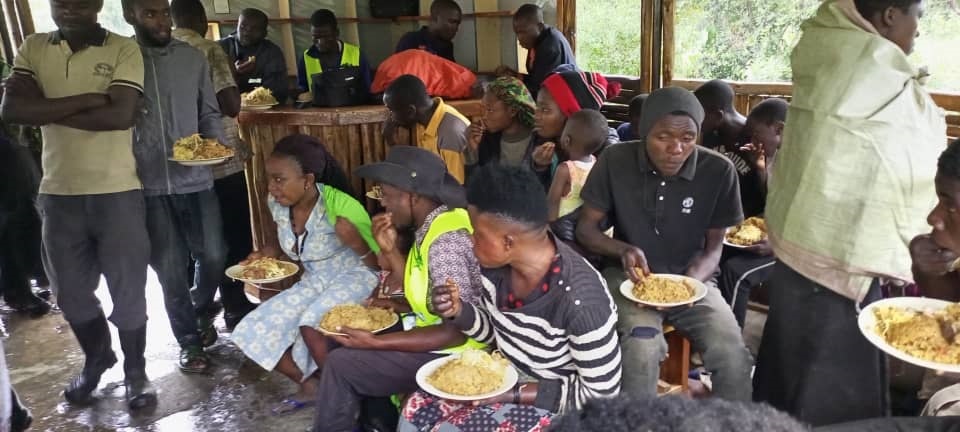
Women’s involvement in the event:
Everything important for a mother is super important for the community and nation. Indeed, whatever makes a mother put a baby down is a significant activity. This tree-planting event happened to be one of those few important activities. We were impressed when we saw a number of mothers put down their babies to carry big sacks of seedlings on the 3km trail heading to the planting area. Mothers likely already saw the need to plant trees, had missed the tree planting events very much or needed to put food on the table back home.
You can also be part of the future tree-planting fun next time.
This is fun that runs throughout the year through raising seedlings, planting trees and tending to them. The result is always the biggest of all. After about three years, the planters and communities can already walk under the canopy of the planted trees being celebrated by the birds and other wildlife.
Everyone can be part of this achievement and the fun of planting trees. Every year we have tree-planting events. These tree-planting events are run during the rainy seasons of April-May (the short rains) and August – November (the long rains). Between the rainy seasons, in the months of June, July and December to April, we are normally tending the trees to ensure they grow well. The tending activity includes; staking, weeding, watering or refilling the gaps of dried trees.
These non-planting months are the tourist peak seasons of the Rwenzori Mountains treks. We, therefore, invite travellers to participate in our tree-planting projects during their visit to Uganda and Rwenzori.
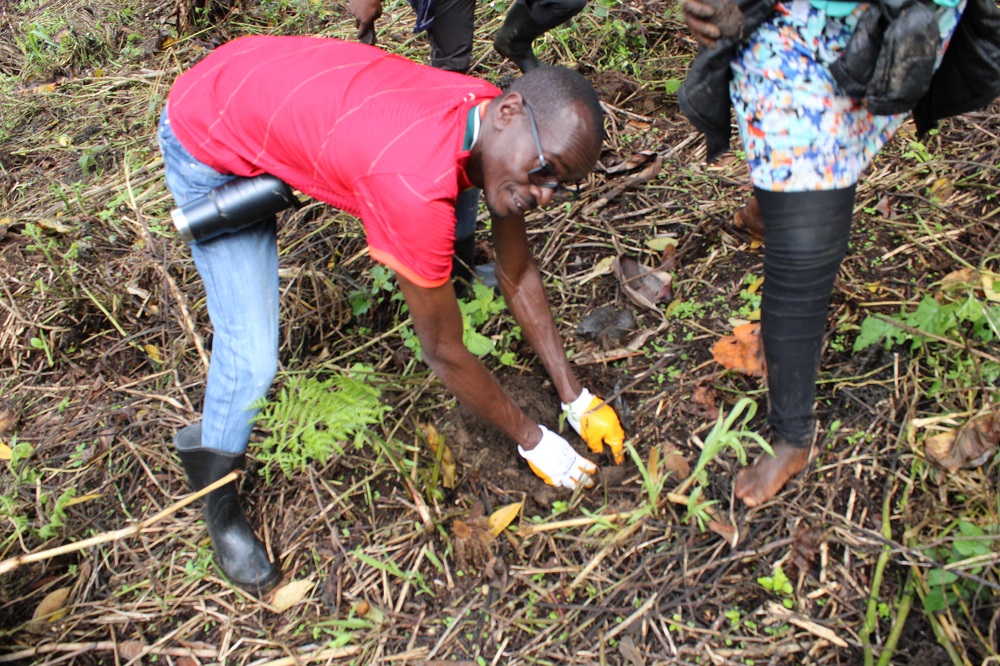
At this moment, there is nothing more important than conserving the environment. Planting trees and landscape restoration are one of the major conservation activities that we have chosen to take on in our communities. We are inviting well-wishers and partners to join us in this noble journey in the different ways below;
- Sponsoring a tree/ seedling
- Buying an acre of ecologically sensitive land and availing it for restoration
- Planting trees with the community
- Tending the trees during the none planting seasons
- Taking a trip that either involves or sponsors our tree-planting works here
For further information, you can contact our tree planting coordinator who will give you more information

